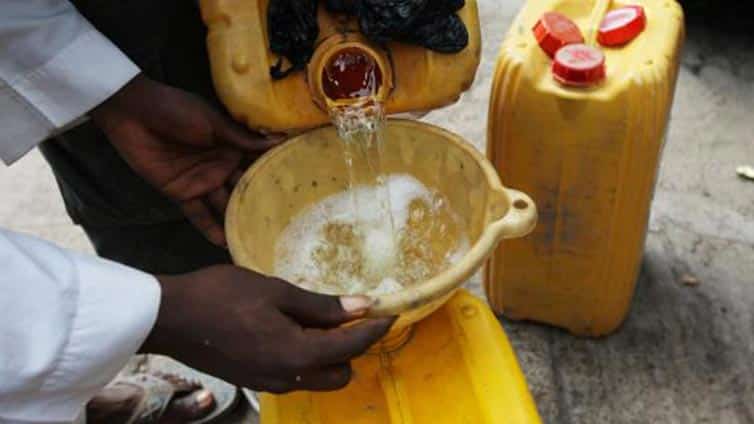Business
Nigerians May Buy Kerosene At More Costly Price – Experts

A report by the Nigerian Bureau of Statistics has shown that the price of cooking Kerosene may go up again from its current unfriendly cost across states.
An in-depth view by a former Director-General of Lagos Chamber of Commerce and Industry, Dr Muda Yusuf, who charged the federal government to intervene in the commodity price hike immediately, further backed the report of the NBS, Naija News reports.
During an interview with The PUNCH, Yusuf said unless the government intervene to bring down the costs of the product quickly, it may aggravate the suffering of the poor masses.
“The astronomical increase in the price of cooking kerosene will further aggravate the poverty situation in the country. Household kerosene is not a luxury. It is a necessity. It is bad enough that we are grappling with high food inflation, and now there is an additional burden of an escalating cost of cooking the food.
“So for the average Nigerian and the poor, this is an added burden, and obviously, the impact on poverty will be very profound,” the news platform quoted Yusuf.
Based on the NBS report, average Nigerians may not be able to afford household kerosene again as the commodity price has risen by 118 per cent in the last 12 months.
According to the National Household Kerosene report of the NBS for September, the average retail price per litre of the product rose by 118 per cent to N947 from N434 recorded in September 2021.
The report revealed that the average retail price per litre of HHK paid by consumers in September 2022 was N947, indicating an increase of 17 per cent compared to N809 recorded in August 2022.
State Analysis Of Kerosene Price
A breakdown of the report showed that on state profile analysis, the highest average price per litre in September 2022 was recorded in Enugu with ₦1,272, followed by Ebonyi with ₦1,264 and Cross River with ₦1,186.
On the other hand, the lowest price was recorded in Rivers with N686, followed by Bayelsa with N715 and Nasarawa with N735. In addition, analysis by zone showed that the South-East recorded the highest average retail price per litre of the product with ₦1,128, followed by the South-West with ₦1,068, while the North-West recorded the lowest with N869.
The average retail price per gallon of the products paid by consumers in September 2022 according to the NBS report was ₦3,236.
The figure shows an increase of 10 per cent from ₦2,948 in August 2022. On a year-on-year basis, it increased by 110 per cent from ₦1,541 in September 2021.
Also, Abuja recorded the highest average retail price per gallon of cooking kerosene with ₦4,200, followed by Abia with ₦4,078 and Enugu with ₦4,052, according to the report. On the other hand, Borno recorded the lowest price with ₦2,500, followed by Zamfara and Delta with ₦2,555 and ₦2,577, respectively.
Analysis By Zone
From the NBS report, the South-East recorded the highest average retail price per gallon of the product with ₦3,607, followed by the South-West with ₦3,468, while the North-East recorded the lowest with ₦2,804.
In July, one gallon of cooking kerosene was sold for N790, an increase of 3.68 per cent compared to N761.69 recorded in June.
It could be recalled that the Nigeria National Petroleum Company Limited (NNPC) had recently halted the importation of the product. The development is observed to have resulted in a continuous hike in prices by independent marketers.
Meanwhile, the Group Chief Executive Officer of NNPC Ltd, Mele Kyari had said that more than 70 per cent of the over 200 million Nigerian population lack access to clean cooking fuels. The price of cooking gas has also skyrocketed.
On his part, during an interview with journalists, the National President of the Nigerian Association of Liquefied Petroleum Gas Marketers, Oladapo Olatunbosun, disclosed that gas consumption had dropped drastically to 800,000 metric tonnes per annum from 1, 250 million MT per annum recorded about four months ago.
According to him, given Nigeria’s huge population, the country should consume at least six million MT per annum.
“800, 000MT per annum is the current consumption rate in Nigeria. A few months ago, we were doing 1,250 million MT per annum.
“Ordinarily, given our population in this country, we should consume about six million MT per annum just like other African countries like Morocco, Egypt, Algeria, Kenya, South Africa and other countries. But these countries currently consume more LPG than Nigeria despite our huge population,” Olatunbosun told newsmen.












